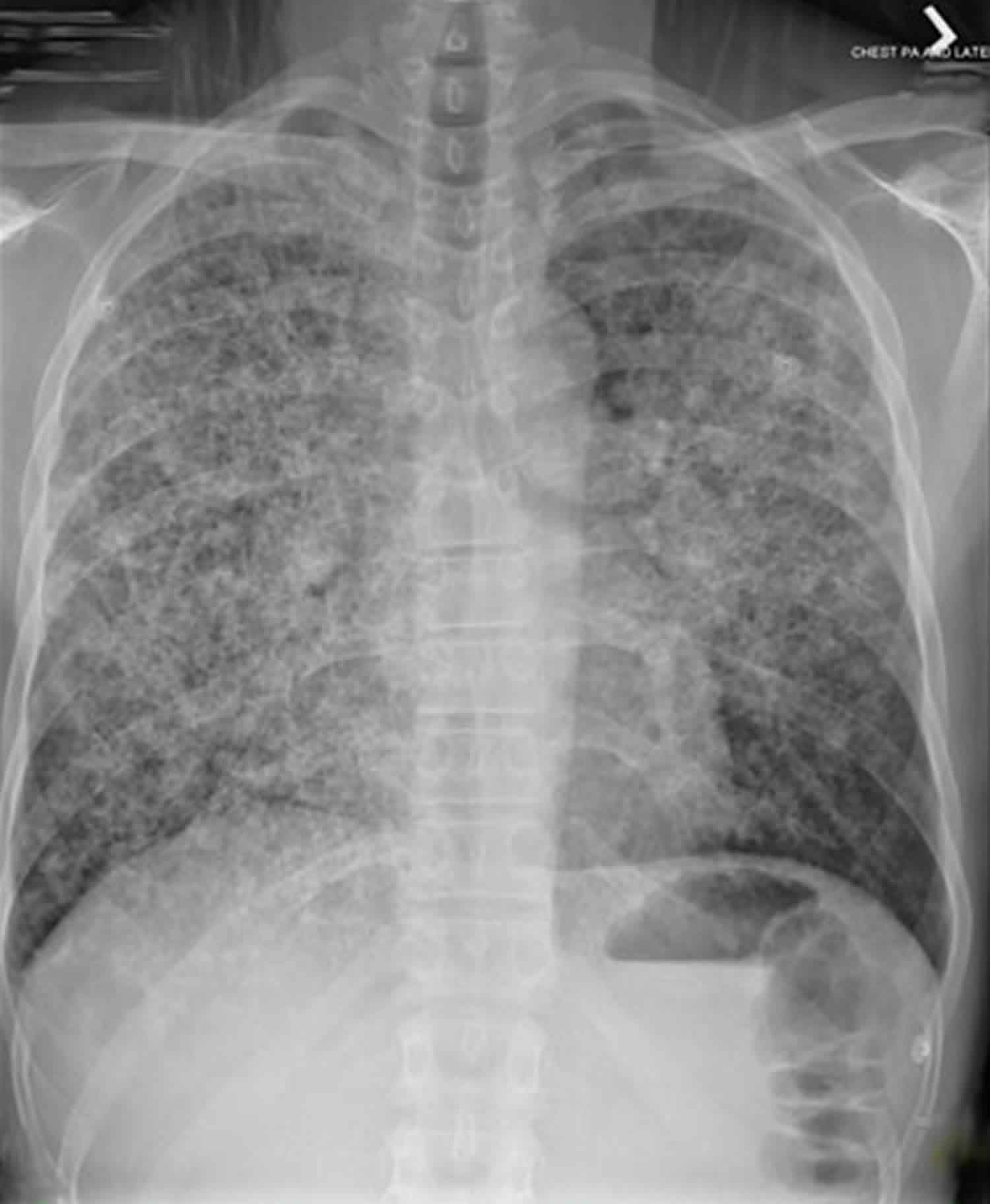Lung infiltrates
The term “lung infiltrates” or “pulmonary infiltrate” is considered a context-dependent, non-specific and imprecise descriptive term when used in radiology reports (plain film or CT) 1. From a pathophysiological perspective, the term “infiltrate” refers to “an abnormal substance that accumulates gradually within cells or body tissues” or “any substance or type of cell that occurs within or spreads as through the interstices (interstitium and/or alveoli) of the lung, that is foreign to the lung, or that accumulates in greater than normal quantity within it” 1. While when used with a better anatomic reference, such as alveolar, air space, interstitial, or nodular, it may occasionally be helpful in suggesting an underlying pathologic basis for the findings on the radiograph, the use of the term in general is discouraged 2.
According to a study by Patterson et.al, the use of the term “infiltrate” on its own was not shown to be very meaningful for the clinician or very beneficial to the patient 3.
According to Fleischner Society recommendations, use of the term “infiltrate” remains controversial and is no longer recommended 4.
Persistent pulmonary infiltrate results when a substance denser than air (e.g., pus, edema, blood, surfactant, protein, or cells) lingers within the lung parenchyma. Nonresolving and slowly resolving pneumonias are the most common broad categories of persistent pulmonary infiltrate 5. Persistence is attributed to defects in host immune defense mechanisms, presence of unusual or resistant organisms, or diseases that mimic pneumonia 6.
The classification of these disorders may become quite complex, as some clinicians focus primarily on the radiologic abnormalities, while others emphasize the accompanying clinical features. Nonresolving or slowly resolving pneumonia is loosely defined as a pneumonia that does not improve clinically, or even worsens, despite a minimum of 10 days of adequate antibiotic therapy, or as radiographic infiltrate that does not resolve within 12 weeks 7. Slowly resolving pneumonias are usually defined as the persistence of radiographic infiltrate in a clinically improved patient for longer than 4 weeks (<50% resolution in 1 month) 8.
A waiting period of 12 to 14 weeks is suggested for slowly resolving pneumonia to be considered nonresolving (or chronic) in older patients with nontuberculous bacterial pneumonia 7. Nonresponding pneumonia is an inadequate clinical response despite antibiotic treatment. It is an independent risk factor for death and delayed resolution of pulmonary infiltrate 9. Noninfectious causes are responsible for about 20% of cases of nonresolving pneumonia 9.
Lung infiltrate treatment
The term “lung infiltrates” or “pulmonary infiltrate” is considered a context-dependent, non-specific and imprecise descriptive term when used in radiology reports (plain film or CT) 1. From a pathophysiological perspective, the term “infiltrate” refers to “an abnormal substance that accumulates gradually within cells or body tissues” or “any substance or type of cell that occurs within or spreads as through the interstices (interstitium and/or alveoli) of the lung, that is foreign to the lung, or that accumulates in greater than normal quantity within it” 1. While when used with a better anatomic reference, such as alveolar, air space, interstitial, or nodular, it may occasionally be helpful in suggesting an underlying pathologic basis for the findings on the radiograph, the use of the term in general is discouraged 2.
According to a study by Patterson et.al, the use of the term “infiltrate” on its own was not shown to be very meaningful for the clinician or very beneficial to the patient 3.
According to Fleischner Society recommendations, use of the term “infiltrate” remains controversial and is no longer recommended 4.
- Pulmonary infiltration. https://radiopaedia.org/articles/pulmonary-infiltration?lang=us[↩][↩][↩][↩]
- Censullo ML. The “I” word in chest radiography. why is it such a dirty word?. Radiology. 2005 Dec;237(3):1121 https://doi.org/10.1148/radiol.2373050555[↩][↩]
- Patterson HS, Sponaugle DN. Is infiltrate a useful term in the interpretation of chest radiographs? Physician survey results. Radiology. 2005;235 (1): 5-8. Radiology (full text) – doi:10.1148/radiol.2351020759 https://doi.org/10.1148/radiol.2351020759[↩][↩]
- Fleischner Society glossary of terms: infiltrates. Radiology. 2008 Sep;248(3):1083. doi: 10.1148/radiol.2483080610. https://doi.org/10.1148/radiol.2483080610[↩][↩]
- Menendez R, Perpina M, Torres A. Evaluation of non-resolving and progressive pneumonia. Semin Respir Infect. 2003 Jun;18(2):103-11[↩]
- Mandell LA, Wunderink RG, Anzueto A, et al. Infectious Diseases Society of America/American Thoracic Society consensus guidelines on the management of community-acquired pneumonia in adults. Clin Infect Dis. 2007 Mar 1;44 (Suppl 2):S27-72.[↩]
- El Solh AA, Aquilina AT, Gunen H, et al. Radiographic resolution of community-acquired bacterial pneumonia in the elderly. J Am Geriatr Soc. 2004 Feb;52(2):224-9.[↩][↩]
- Rome L, Murali G, Lippmann M. Nonresolving pneumonia and mimics of pneumonia. Med Clin North Am. 2001 Nov;85(6):1511-30, xi.[↩]
- Menendez R, Torres A, Zalacaín R, et al. Neumofail Group. Risk factors of treatment failure in community acquired pneumonia: implications for disease outcome. Thorax. 2004 Nov;59(11):960-5.[↩][↩]





